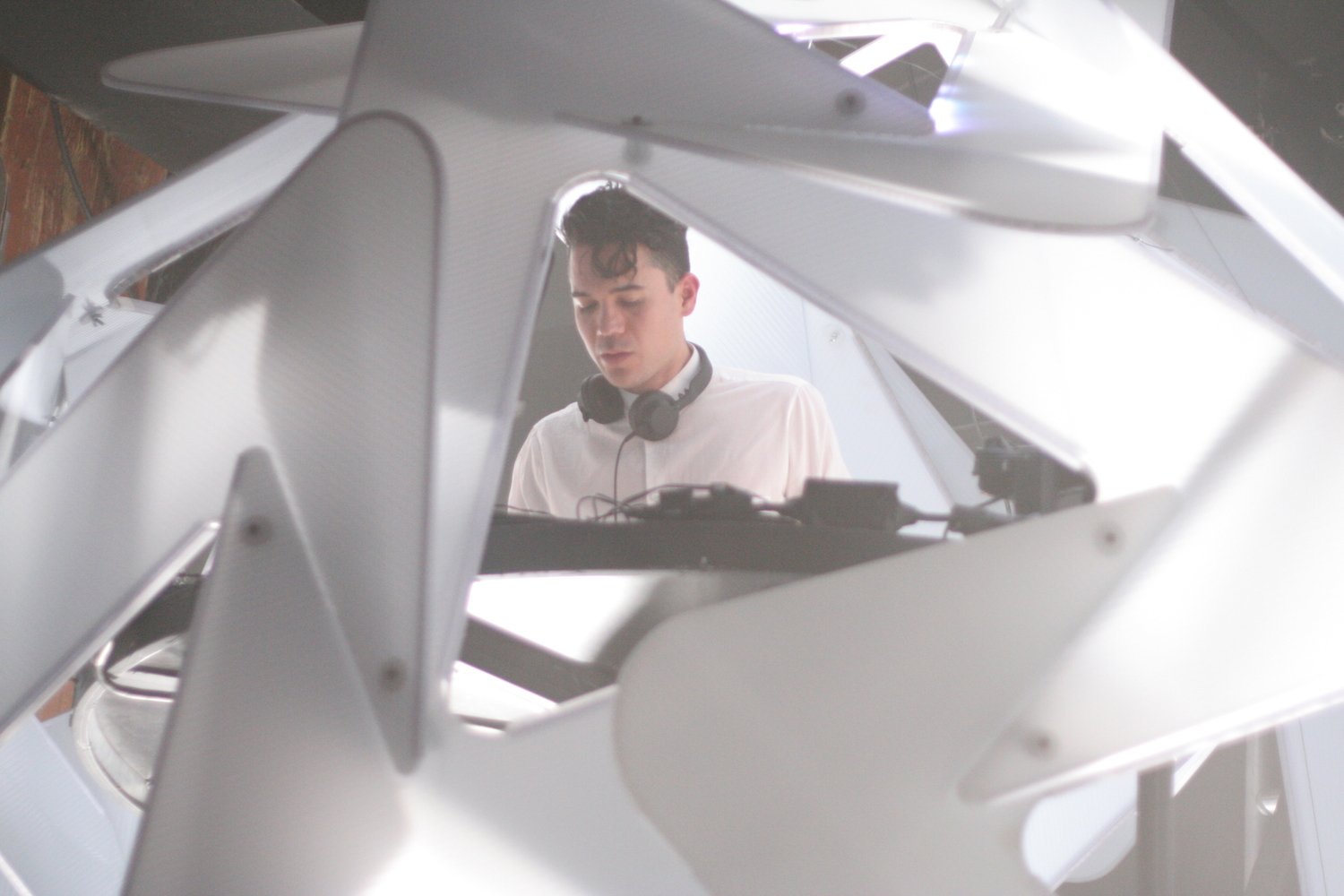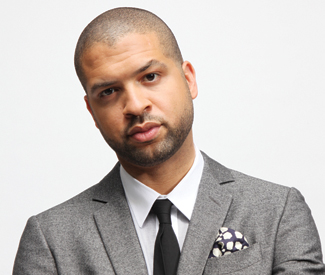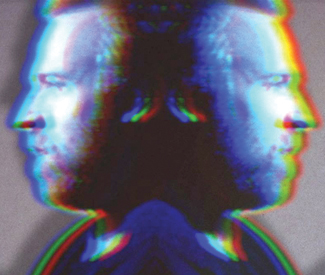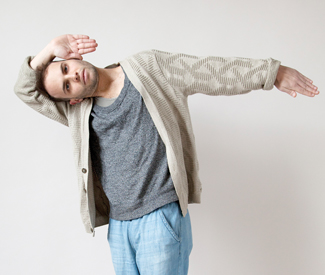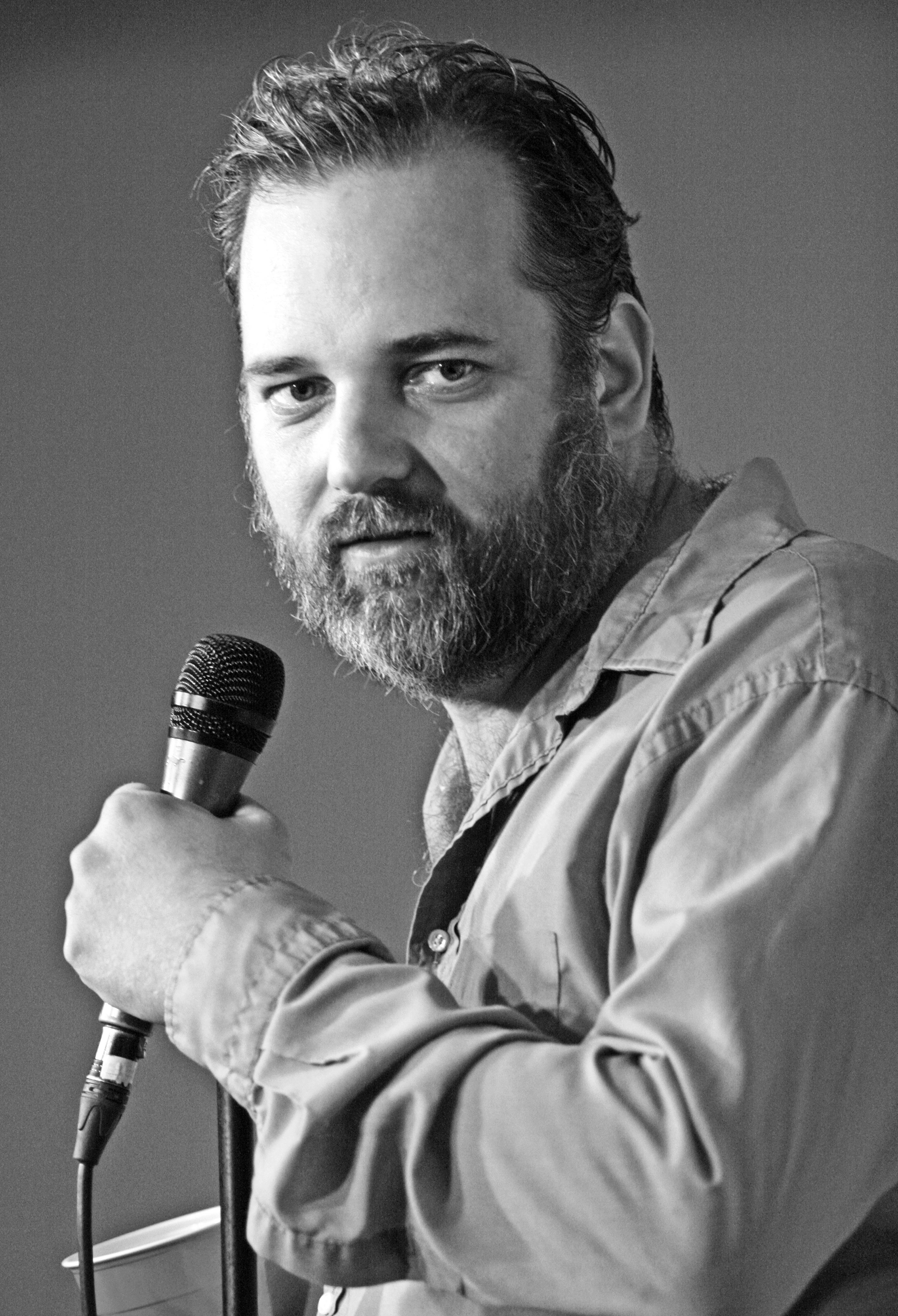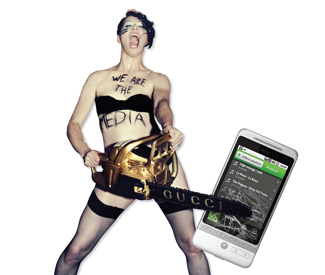emilysavage@sfbg.com
MUSIC You’re watching a band live at the Rickshaw Stop, or Café Du Nord, or the Warfield, and you’re maybe a little tipsy, but it sounds like, really, really good right now. You feel inspired, mesmerized even, and looking around, you can tell your friends are feeling it too — sonic elation. It’s a rare moment in this town, that emotional connection between you and the artist, with so many other possible distractions. Speaking of which, you pull out your smartphone, tap, and swipe to automatically tip the band $5 extra. You get the fuzzy do-gooder feeling. You feel bold and connected, and perhaps still a bit drunk. Did she just wink at me? The future is now.
“Probably about a year ago we realized we made purchasing things very easy, which at the time was just admission into shows,” says WillCall co-founder and CEO Donnie Dinch, clad in a black WillCall T-shirt and grasping a glass of whiskey from an oversized wood booth in the Mission’s Dear Mom, which is around the corner from the WillCall office.
“The entire concert experience doesn’t end with getting in. There’s a lot of friction and noise; if you already paid to get in, you shouldn’t have to schlep around more cards.”
Hey there, concert industry 2.0 (or rather, 2k13). WillCall, and other concert convenience apps such as Thrillcall, Timbre, Bandsintown, and Songkick, have been vying to alleviate and embolden your smartphone ticketing experience for just a few years now.
In fact, WillCall and Thrillcall, both local San Francisco-based start-ups, each launched their apps in February of 2012. And in the past year and a half, they’ve independently seen raised profiles, their own buzzy pop-up shows, and likely more than a few confused consumer comparisons.
And re-upped versions of both, launching this summer and fall, could determine the future of these companies in differentiating their space.
At Dear Mom, Dinch is speaking of WillCall’s newest push to include a few more concert options within the app beyond tickets, or an “in-show experience,” which means not only purchasing tickets to a few select shows, but also swiping the app to buy merch, tip the band on stage, or create a custom festival package.
Thrillcall, meanwhile, is set to release its own version 2.0 in October. Along with a sleeker look (Thrillcall has been criticized for its less-than-flashy interface), there will be a slightly different system for the app, which now displays full concert listings for the night, but only offers deals and direct ticket purchases to a small handful of shows.
“The next version of the app is going to take all of the historical data we have, all of the input you want to give us, and it’s going to start manicuring that listing,” says Matthew Tomaszewicz, co-founder and head of product marketing and business development at Thrillcall. He’s a friendly and inquisitive Kevin Bacon-type sitting in one of the metal chairs in the floor-to-ceiling glass-walled lobby of the SOMA building where Thrillcall currently sets up shop on the 11th floor.
“We’re not at recommendations just yet, because there’s an interstitial step where we’re going to start putting out some stuff we think you’ll like, but the only way we can build recommendations is if people interact with it,” he says cautiously. “I’m a little careful about calling it recommendations because I don’t want to give that expectation of ‘oh, you said I’d like this.’ It’s more, OK, well, we culled a little bit here with some filters and lists of things you might like, and how will people respond?”
TIPPING THE SCALE
WillCall’s newest offerings seem the techy approach to the concert industry. Why can’t we just go to DIY house shows, get sweaty, meet the bands, buy a shirt off the table, and reminisce about it all in person, anymore? That still happens, but for a different demographic than would typically use these apps.
The kind of standard, everyperson concert-goer in a major city would likely discover new music on Spotify or Rdio, then buy tickets on a website. So the industry is becoming more tech-oriented anyway.
But concepts like “band-tipping” seem wayward, depending on the show — there’s a reason you usually tip a bartender, valet, or stripper and not the musicians. Remember that cover to get in to the show? The ticket you were sold? Some of that was for the band, and it will get a cut.
Dinch says he sees the new features as “like an extra, a ‘thank you,’ a ‘you deserve this,'” if someone is particularly enjoying a set and wants to give a little more, directly to the artist.
See, bands can no longer make money from albums sales thanks to file-sharing, low-paying online music streaming services, and a whole host of infected music industry problems, so these shows really are their biggest source of income, and a little extra here and there couldn’t hurt. Most bands don’t get $1.2 million in venture capital infusions like start-ups do.
Dinch says the idea came about during a casual staff conversation in the office’s “cozy room,” which is exactly what it sounds like.
The first time they tried it was at a Tanlines pop-up at the Rickshaw Stop with Aaron Axelsen, who runs weekly 18+ dance party Popscene. “We did it at first in a real hacky way…during the show we sent everyone a one-time thing that said like, ‘If you’re having fun, swipe to tip the artist’ and if they didn’t swipe, it was gone forever.” Nearly 50 percent of the crowd tipped $5 each. And it was money that went directly to the artist.
“Right around the time we did that we heard Amanda Palmer’s TED talk,” Dinch says, referring to the alt-rocker’s impassioned plea suggesting artists be directly supported by fans. “And I think people really do underestimate the generosity of the crowd. Or, at the very least, underestimate the guilt the crowd feels for not paying for music properly. But I think if people thought there was an easy way to give money directly to the artist, they would do it a lot more.”
Right now, the buying-merch function of the app is limited. If you buy something using your phone at the show, the item gets shipped directly to your home — that way you can, “still get sloshed and not worry about carrying a shirt or poster around.” Or if you don’t have cash, or don’t want to wait in line, all of these things are removed from the equation. However, can you still claim you “got it at the show,” when you actually ordered it online while at the show? Should that even matter?
“If it’s easy for me to buy some shit, I’m probably going to buy it,” Dinch says. “That sounds weird but if it’s like, three taps and I have a t-shirt…I probably wouldn’t wait in line for a long time, but I’d happily do this in five seconds.”
ORIGIN STORIES
Both WillCall and Thrillcall have those oft-repeated origin stories, as tech companies are expected to push these days.
The seeding of WillCall started while Dinch was living in Seattle a few years back and working on package design while learning “how to get good at making things on the Internet.” He was sitting at his friend and now co-founder Julian Tescher’s kitchen table listening KEXP when the Shout Out Louds came in the studio to play songs live. The band’s Seattle show was that night, and Dinch, a big fan, had no idea. Bring in Julian’s developer brother Patrick, along with an initial Silicon Valley investment of $50,000 from early-stage seed fund and incubator program 500 Start-ups, and ship the whole crew down to SF in 2011.
It since has expanded to seven full-time staffers, including chief communications officer K. Tighe, who is sitting next to Dinch at Dear Mom. The company also initially included well-known local promoter Steve Brodsky, who sadly died of cancer earlier this year. And after WillCall announced its version 2.0 last month, it also announced another round of funding, to the tune of $1.2 million in investments from the likes of Facebook and Spotify investor and fancy wedding-haver Sean Parker, and band manager Coran Capshaw.
Thrillcall, meanwhile, was first a concert listings and ticketing website, which began in 2008. “As the industry changed, and obviously everybody uses some sort of mobile device, but the ability to find that stuff through mobile devices is prehistoric compared to the web. So that’s where we moved the business because that’s where people are going,” Tomaszewicz says. Before that Tomaszewicz helped develop the first surfing app for Surfline.com. Thrillcall’s app launched with a bang at 2012’s Noise Pop festival, a sure in with the local indie pop community.
Both companies claim to be active and deeply connected to the local music communities, and for WillCall a lot of that credibility came from the connection to Brodsky.
Currently, WillCall is in San Francisco and last month launched in New York. Thrillcall is in SF, New York (where Tomaszewicz grew up), LA, and Chicago. Both are hoping to expand to other major national and even international cities within the year.
WHY BOTHER?
This is the million dollar question; why use any concert ticket apps on your phone, instead of going to the venue website or Ticketmaster, Ticketfly, etc. as you’ve been doing since the days of waiting in line at Tower Records?
Well, first of all there’s the ease. Tap the app open then tap to purchase tickets to a (possibly) supercool show in seconds. (Your credit card info is already there, they have your email address, and your friends are alerted to your ticket purchase if you so desire.) It’s fast, simple, and honestly, kind of fun. Though let’s just hope the shows available are bands you want to see.
Herein lies another possible problem, which is that the shows that are chosen, or “curated,” by the fine people at these companies might not be the right option for you, personally. Currently, WillCall lists a few shows through its app, and you have the option of going, but what if you don’t like said bands? At press time, the offerings were Monterey’s First City Festival, Sex Panther at Vessel, Paper Diamonds and Roach Gigz at 1015 Folsom, and Bells Atlas at Brick and Mortar Music Hall, among a few scattered others.
Maybe hop over to Thrillcall. While this app also only offers direct purchase to a handful of shows, many more are listed in a full calendar, and they’ll send you to a third-party ticketer if you click. At press time, Thrillcall’s exclusive is also, interestingly, Bells Altas at Brick and Mortar Music Hall, along with Bootie SF at DNA Lounge, and Rich Medina at New Parish. Perhaps there’s something there worth checking out, maybe not.
Thrillcall also might have a deal on a show, a cheaper price from the day before, although that kind of dynamic pricing happens rarely, Tomaszewicz says. “We did stuff for Live Nation and their Mayhem festival and we interested different fans because each day in the five days leading up to the festival we had a different kind of offer: VIP, or discount, or free parking. It’s another way to market the same show to a different group of people.”
Though as mentioned earlier, Thrillcall will soon be tailor-making your show options, based on the personal preferences you offer to them.
And there’s something that’s specific to these types of apps, regardless of preference: they offer a this-week or right-now idea of what to do at night. As WillCall’s K. Tighe points out, if you buy tickets months in advance — which is the current system for most concert-goers — you have no idea if you’ll feel like going out the night of that show. With these apps, it’s instant pleasure on the night you want.
“I think if you were forced to buy your ticket three months ahead of time with your finger on the trigger of your mouse, hoping the secondary market doesn’t get it before you, your expectations are through the fucking roof. You don’t even know if you want to see a show that day,” Tighe says excitedly. “So the idea that you decided, ‘hey I want to see a show tonight,’ you’re in the mood to have a good time. That’s a more natural approach to going to see live music than planning for months.”
And for venues, it solves the question of what to do with those last 50 or 100 tickets the night before the show, so it can be a win-win situation, if it’s played out right.
THE PROMOTER’S SIDE
“One of the interesting things, being forced to learn about marketing in the Internet age, is that your customers will tell you where they want to be and how they want to purchase and where they want to go to find out about things,” says Robbie Kowal, co-founder of Sunset Promotions (which runs Bay Area parties throughout the year like the annual Sea of Dreams NYE bash, and more frequent Silent Frisco events), and previously did PR for Optivo, a company that was developing technology for dynamic pricing. “As much as I would like people to just open our emails, they insist on making me talk to them on Facebook. So if our customer base, for instance, showed a lot of interest in one of these services, well then we would pursue it further, So far I think they are start-ups.”
“Start-ups” might just be another way of saying they don’t currently make any money, and would rather throw cash — including WillCall’s recent $1.2 mil of VC funding — at building up a user base. In fact, when asked how WillCall plans to make money at all, Dinch responded with this obfuscation, “Whenever you provide these tools that make it easier for people to go to shows, get merch, get drinks at the bar, I think you’ll see that the overall money spent on these things will be higher, you’ll see more revenue through the venue, through the door, that’s the bigger vision. So I think it’s fair for us to take a small percentage of those transactions.”
Adding, “We aren’t currently doing that, eventually we’ll do that. We wanted to figure out something that worked before we took money. But hopefully we’ve managed expectations with everyone that it’s not going to be forever free.”
In its most extreme form, engaging that active database of fans has involved booking, producing, and promoting shows that require fans to purchase the tickets mainly through the app instead of the venue’s box office or website. WillCall has done this at Rickshaw Stop with AraabMuzik and Thrillcall has at Brick and Mortar Music Hall with Thee Oh Sees. It’s a simple way to strong arm a fanbase of a hip act into at least trying your app and exchanging a little bit of information. Anyone without a smartphone (In this city? Ha, I know, right?) is presumably out of luck.
And building a user base can be an end in and of itself: “Remember Going.com?” Kowal asks, “Similar thing. It was an RSVP service, and they were throwing money around at promoters, and all it really was a user grab. Basically getting an entertainment-centric user base and eventually I think they sold the company to AOL. That’s a pretty smart business move.”
In the meantime it’s a deal for the smart (or smart phone-enabled) concert-goer, with tickets through WillCall being service charge-free. Venues — particularly ones specializing in live bands — have the most to gain from partnering with the deal. If you have five to six shows a week throughout the year, giving a portion of your tickets to a third party to promote and sell is a no-brainer. Particularly when it comes at no financial cost.
Currently WillCall is taking no cut out of the tickets they sell. Rickshaw Stop is a frequent listing and host of WillCall events, and Axelsen was very clear about his support of the relationship, saying “I am a big fan of WillCall! Great partners with Popscene and I see instant results each week with their reach and ability to generate an extra buzz around our weekly Popscene shows (and bring out last second bodies, too).”
APP CODA
Selling tickets — especially when they’re limited — isn’t easy. Storytime: In 2004 the Pixies were reuniting for a tour. One of the only shows for hundreds of miles was at UC Davis, and hardcore fans traveled just to buy tickets, camping out in front of the box office. At the same time, the ability to buy tickets online had only recently been introduced and many people rolled out of bed moments before the box office opened to snag tickets from their computer. No tickets were set aside for the physical box office, though, and consequently, when the show sold out almost instantly, most of the hardcore fans with the tents and sleeping bags were out of luck.
Coming out of a culture where people stand in line to buy phones (or in this city — ice cream) but expect ticket-buying to be effortless, the current wave of apps is in danger of emphasizing the worst problems of Ticketmaster or Craigslist, giving preference based mainly on access to technology, which could underscore broader economic issues. Here’s a contemporary paradox: people buying tickets for shows on smartphones to see crusty bands that don’t even have smartphones themselves.
The real key may be in combining the slickness of discovery apps with ticketing systems like Ticketfly or Eventbrite. “With their analytical tools, I can determine who my best and most loyal customers are,” Kowal says. “I think as the ticketing companies get better at what they do, as they begin to emulate the Ticketflys of the world, they may make a lot of these sort of start-up apps irrelevant or just end up snatching up whatever little pieces of technology they have and adding them to the ticketing system.”
But Dinch, at least, says he has no intention of selling his company to a broader ticket vendor. “I want this to be something that’s the next pivot point of how we think about music in everyday life. And maybe that’s audacious and stupid, but I’m fine for now. The bottom line is that I have no desire to sell this company to anybody and I’d rather slowly build it the right way.”

